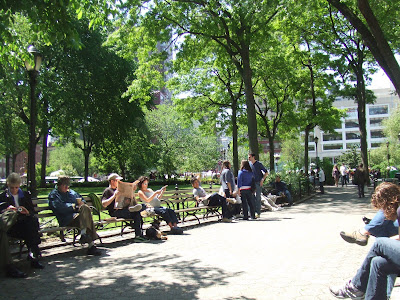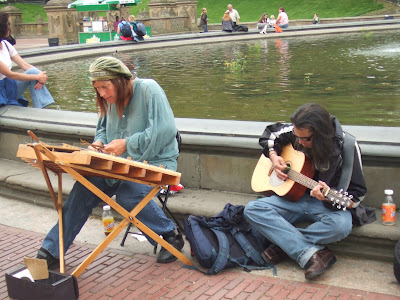 The Meatpacking District, officially known as Gansevoort Market is bounded by Horatio Street (and Greenwich Village ) on the south, 16th Street (and Chelsea) on the north, Hudson Street and 9th Avenue on the east and West Street.
The Meatpacking District, officially known as Gansevoort Market is bounded by Horatio Street (and Greenwich Village ) on the south, 16th Street (and Chelsea) on the north, Hudson Street and 9th Avenue on the east and West Street.The original Gansevoort Market took its name from its location on Gansevoort Street which was at one time an Indian trail leading to and from the Hudson River. To begin with this road was called Great Kills Road (a corrupt form of the 'kiln' that was located alongside the road) and later renamed in 1837 Gansevoort Street after Fort Gansevoort at the foot of the street. Peter Gansevoort (1749-1812) was a New York General from the Revolutionary War.
Today's Gansevoort Market area is actually the site of three distinct markets that have existed here at various times during the past century and a half, the original Gansevoort Farmers Market, the West Washington Market and today's Gansevoort Market Meat Center.
 By 1900, Gansevoort Market was home to 250 slaughterhouses and packing plants, but by the 1980's, it had become known as a center for drug dealing and prostitution, particularly transsexuals.
By 1900, Gansevoort Market was home to 250 slaughterhouses and packing plants, but by the 1980's, it had become known as a center for drug dealing and prostitution, particularly transsexuals.By 2003, only 35 of the 250 slaughterhouses and packing plants remained and the district had gone through a transformation which had started in the late 1990's.
 High-end boutiques such as Diane von Furstenberg, Alexander McQueen, and Stella McCartney, restaurants such as Pastis and Buddha Bar, bars such as Hogs & Heiffers, and nightclubs such as Level V, Tenjune, Kiss & Fly and APT, all haved opened to attract and cater for young professionals and hipsters. In 2004, New York Magazine called the Meatpacking District "New York's most fashionable area".
High-end boutiques such as Diane von Furstenberg, Alexander McQueen, and Stella McCartney, restaurants such as Pastis and Buddha Bar, bars such as Hogs & Heiffers, and nightclubs such as Level V, Tenjune, Kiss & Fly and APT, all haved opened to attract and cater for young professionals and hipsters. In 2004, New York Magazine called the Meatpacking District "New York's most fashionable area".















































